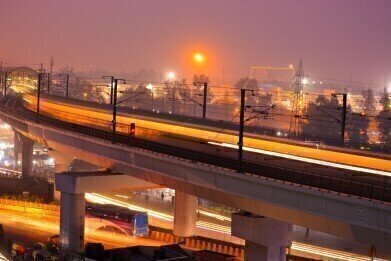Air Monitoring
Are India's Air Quality Figures a Lie?
Oct 28 2014
Earlier this year, the World Health Organisation (WHO) declared Delhi to be the most polluted city on Earth. Based on official statistics from India’s air quality monitoring program, Delhi’s emissions (largely from coal-based power plants and vehicle pollution) have made the city three times more polluted than Beijing. However, due to faulty instruments and a lack of enforcement in India means that recent statistics may actually be an underestimate.
A closer look at India’s air quality
Pollution is a serious concern both for human health and for the environment, but how do we know how much there is?
Air quality is measured in terms of the concentration of microscopic particles in the air. Particles measuring less than 2.5 micrometres, known as PM2.5 are extremely fine in diameter. This makes them small enough to pass through the tissue of the lungs and enter the blood stream. Once inside the body, PM2.5 particles can cause chronic bronchitis, lung cancer and heart disease. Although research indicates there is no safe level of exposure to PM2.5s, the Central Pollution Control Board in India (CPCB) suggests that readings below 60 ig/m3 are “safe”. With average readings of around 150 ig/m3 in Delhi, India’s capital is significantly above safe levels, and estimates suggest that nearly 45% of children living in the city now suffer from reduced lunch function and breathing problems. In comparison, London has a reading of 16 ig/m3.
Bad to worse
The state of India’s air quality is bad, but it may be even worse than these statistics suggest. PM 2.5 levels are measured by instruments called high-volume samplers, which take in a fixed amount of air and measure the number of PM 2.5 particles in it. When the CPCB compared Indian-made PM2.5 samplers to those manufactured in other countries, they found huge discrepancies. Some samplers leak air, others fail to draw in enough air to provide meaningful data – both design flaws that are likely to underestimate the true levels of PM 2.5 in the air. There is no government-enforced quality standard for high-volume samplers. White they mandate that manufactures comply with US Environmental Protection Agency specifications, manufacturers self-certify and there is no enforcement of these regulations.
Instead of investing in cleaner technologies, industries have instead been fudging the data in order to avoid retribution. By altering the calibration of the machines, directly injecting clean air into the sampler intake or even relocating samplers away from the emissions of the plant, India’s biggest polluters have managed to continue polluting with impunity.
More of the same?
Although the Indian government has recently announced plans for a new air quality index, these proposals largely focus on increasing the number of samplers taking readings across the country and disseminating information to the public. Without addressing the underlying issues, however, all this is likely to achieve is more data fudging and trickery.
India has been named as a member of the worst five countries in the world when it comes to air quality. Do you know who the other four are? You can find out in this article: India is one of five worst countries for air quality.
Digital Edition
IET 34.2 March 2024
April 2024
Gas Detection - Biogas batch fermentation system for laboratory use with automatic gas analysis in real time Water/Wastewater - Upcycling sensors for sustainable nature management - Prist...
View all digital editions
Events
Apr 22 2024 Hannover, Germany
Apr 22 2024 Marrakech, Morroco
Apr 23 2024 Kuala Lumpur, Malaysia
Apr 23 2024 Kintex, South Korea
Apr 23 2024 Edmonton, AB, Canada


















